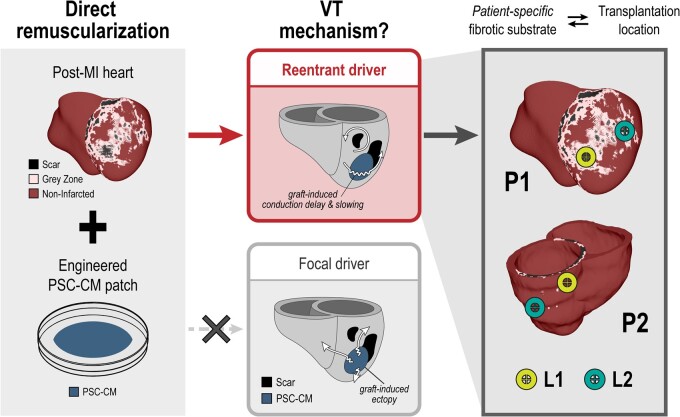Figure 1.
Study overview. Patient-specific, post-MI ventricular heart models (left) derived from LGE-MRIs with biophysically detailed representations of non-infarcted (maroon), peri-infarcted grey zone (pink), and scar (black) myocardial regions were used to study the arrhythmia consequences of direct remuscularization with engineered pluripotent stem cell-derived cardiomyocyte (PSC-CM) patches (blue). When the transplantation and integration of PSC-CM patches onto the post-MI models were simulated, re-entry (top middle) was identified as the primary driver of ventricular arrhythmia as opposed to focal ectopy (bottom middle) arising from intrinsic PSC-CM automaticity. Arrhythmogenicity of remuscularization was closely linked to both the transplantation site and the patient-specific post-MI fibrotic substrate (right).

